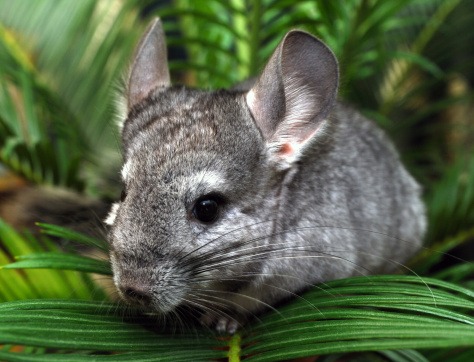marvinwoods.net – Chinchillas, those adorable, small rodents with their incredibly soft fur and playful personalities, have captured the hearts of animal lovers worldwide. Native to the Andes Mountains of South America, these fascinating creatures have adapted to thrive in harsh, high-altitude environments. This article explores the world of chinchillas, delving into their unique physical characteristics, natural behaviors, care requirements, and their complex relationship with humans.
Physical Characteristics: Fur, Ears, and Adaptations
Chinchillas have several unique physical adaptations that make them well-suited for their mountainous habitat:
- Dense fur: Chinchillas are famous for their incredibly soft and dense fur, which is the densest fur of any land mammal. This dense coat provides excellent insulation against the cold temperatures of the Andes Mountains.
- Large ears: Chinchillas have large, sensitive ears that help them to detect predators in their rocky environment.
- Powerful hind legs: Chinchillas have powerful hind legs that allow them to jump great distances, enabling them to navigate the rocky terrain of their habitat.
Natural Behaviors: Social Living, Dust Baths, and Nocturnal Activity
Chinchillas are naturally active and social creatures with specific behaviors:
- Social Living: In the wild, chinchillas live in groups called herds. This social structure provides benefits such as increased protection from predators and cooperative care for young.
- Dust Baths: Chinchillas take regular dust baths to keep their fur clean and free of oil and moisture. This behavior is essential for maintaining the health and quality of their dense coat.
- Nocturnal Activity: Chinchillas are primarily nocturnal, being most active during the twilight hours and at night.
Proper Care: Housing, Diet, and Enrichment
Caring for a chinchilla requires attention to their specific needs:
- Housing: Chinchillas need a spacious cage with plenty of vertical space for climbing and jumping.
- Diet: Chinchillas are herbivores and require a diet of high-quality hay, commercial chinchilla food, and fresh vegetables.
- Enrichment: Chinchillas need plenty of opportunities for play and exercise. Providing them with toys, tunnels, and other enrichment items will keep them entertained and prevent boredom.
Chinchillas and Humans: From Fur Trade to Companionship
Chinchillas have a long history of interaction with humans:
- Fur Trade: Chinchillas were heavily hunted for their luxurious fur, which led to a significant decline in their wild populations.
- Companionship: Today, chinchillas are primarily kept as companion animals, prized for their soft fur and playful personalities.
Conclusion
Chinchillas, with their unique physical characteristics, interesting behaviors, and complex relationship with humans, are a fascinating and captivating species. Whether you are considering adding a chinchilla to your family or simply curious about these creatures, understanding their natural history and care requirements can foster a greater appreciation for these softest of rodents.
